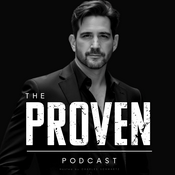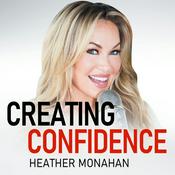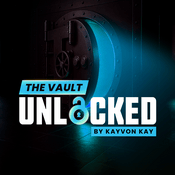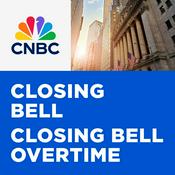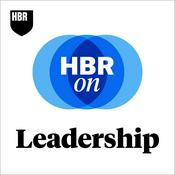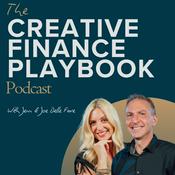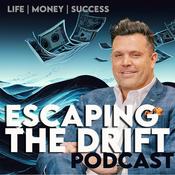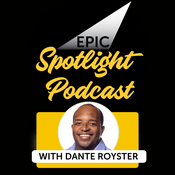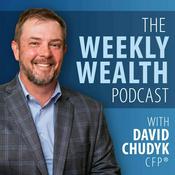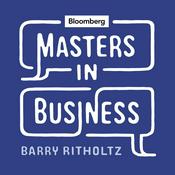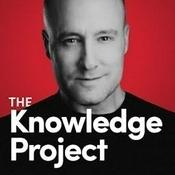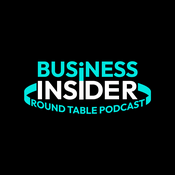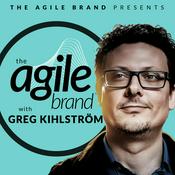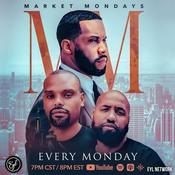411 episodes

How to Hit Your Number When Production Can’t Keep Up (Ask Jeb)
12/23/2025 | 17 mins.
Here's a problem that'll make your head spin: What do you do when you can sell way more than your company can produce? That's the question posed by Dylan Noah from Toronto. Dylan sells craft cider to bars and restaurants across his territory. He's the only salesperson for a small producer, working with limited tools (no proper CRM), and here's the kicker: he could sell a million dollars' worth of product, but production isn't enough to meet that demand. If you're shaking your head thinking this is a champagne problem, you're half right. But for Dylan trying to hit his income goals through commissions, it's a real constraint that's costing him money every single day. The CRM Obsession Is a Distraction Let's tackle the first issue head on. Dylan is worried he doesn't have the right CRM tools to manage his accounts and hit his numbers. Here's the brutal truth: at one point in time, salespeople sold a lot of cider, beer, wine, liquor, and all kinds of other stuff without any CRM at all. They used index cards in a box. They had lists on paper. And they crushed it. You're a small business with one salesperson working with 3,000 to 7,000 potential accounts in your territory. The last thing you should worry about right now is a $40,000 CRM system. Could you use automation for email sequences and promotions? Absolutely. Should you eventually invest in something like HubSpot or Pipedrive? Yes. But right now, what you need is a simple system to identify your best accounts and focus your time there. You're not going to hit $1 million across 3,000 accounts. You're going to hit it across 500 accounts that are the biggest restaurants and bars, where they like you, their customers like cider, and where you can create events and experiences that spike sales. Use a spreadsheet. Use index cards. Use whatever basic tool you've got right now. Create a 30-60-90 day system where you know who you're calling on in the next 30 days, the next 60 days, and the next 90 days. Build a list of your top 250 accounts that buy the most from you. That's where you live. Stop obsessing over tools you don't have and start maximizing the opportunity in front of you. Scarcity Is Your Secret Weapon This brings us to the real issue: production capacity. Dylan can sell it, but his company can't make enough of it. The bourbon distillers in America are dealing with this exact problem right now. They ramped up production years ago based on projected demand, and now they're sitting on excess inventory that's aging out. It's a delicate balance, and if you make too much, it goes bad and you lose everything. Here's what most salespeople don't understand about scarcity: it's actually a competitive advantage if you manage it right. When you have limited product, you're always going to be in an ebb and flow situation. Sometimes you'll have an abundance of one product type. Sometimes you'll have high demand products in short supply. The key is building a system that lets you move fast when opportunity strikes. This is where building buying profiles for every single customer becomes essential. You need to know which accounts buy which types of products, what their purchase patterns look like, and what their potential is (high, medium, or low). Think about it like your account coverage pyramid. When you have product available, you start at the top with your highest value accounts and work your way down. You're not treating all 150 accounts the same. You're prioritizing based on potential. When you have an abundance of one product type, you go directly to the customers who buy that product and say, "Hey, I've got product right now. Do you want to buy?" You can run specials. You can offer incentives (within legal limits). You move it fast. When your high demand products come in, you call your best accounts first and say, "I've got ten cases of this. I'm calling you first. How many do you want?" Then you go down your list. Most of the time, you'll sell out before you even leave your office. But if you've got 150 accounts and you're treating them all the same, it gets overwhelming fast. Segment them. Prioritize them. Work them strategically. Making Your Number When You Can't Control Supply The income issue is where this gets really interesting. Dylan wants to double his sales and earn more commissions, but he can't because the company keeps running out of product. Here's my take: if you're supposed to sell $1.5 million but your company only produces $750,000 worth of product that you could sell, they should pay you for the $1.5 million. Production was the reason you couldn't make your number, not your sales ability. Now, I know there are people in operations reading this who are going to say I'm full of it. But from a sales standpoint, if you've sold out of everything available, you've done your job. The constraint isn't you, it's production capacity. That's a hard conversation to have with ownership, I get it. But here's how you make that case: sell out of the other stuff that people don't want as much. Figure out how to move all of it. Put yourself in a position where you own the moral high ground when it comes to sales performance. If you do that and they still can't or won't pay you for what you could have sold, then you've got a decision to make. But at least you'll have learned how to sell in a resource-constrained environment, how to build relationships, how to manage your territory, and how to work a manual system. Those are skills that transfer to any sales role, especially ones that give you all the bells and whistles and unlimited product to sell. The Power of Old School Discipline Let's go back to 1985 for a minute. In 1985, you would have had a Rolodex with tabs for H (high potential), M (medium potential), and L (low potential) accounts. When product came in, you'd open to H, pull out the cards, and start dialing. "I've got ten cases of your favorite cider. I'm calling you first. How many do you want?" If they don't want any, click. Next card. By the time you hit the tenth account, you're usually sold out. That's the power of segmentation combined with discipline. Systems beat moods. Sequence beats sporadic effort. Process creates momentum. You don't need fancy technology to do this. You need clear priorities, good segmentation, and the discipline to work your system consistently. The Bottom Line If you're in Dylan's situation with limited tools and limited product, here's your game plan: Stop worrying about what you don't have and focus on maximizing what you do have. Build a simple segmentation system using whatever tools are available. Create detailed buying profiles for all your accounts so you know exactly who to call when specific products become available. Work your account coverage pyramid from top to bottom, always prioritizing your highest value customers. Sell out of everything, even the less popular products, so you have leverage when talking to ownership about compensation. The reality is that most sales challenges aren't about having the perfect tools or unlimited resources. They're about having the discipline to work a proven system consistently, even when conditions aren't ideal. That's how you win in sales. That's how you hit your numbers. And that's how you build a foundation of skills that will serve you for your entire career, whether you stay in a resource constrained environment or move to a role where the sky's the limit. Ready to master the fundamentals of prospecting and account management? Check out Jeb Blount's latest book with Brynne Tillman, The LinkedIn Edge, and learn how to build systematic, relationship-driven sales processes that work in any environment.

How to Move from Regret to Reflection: A Year-End Sales Debrief (Money Monday)
12/22/2025 | 11 mins.
While regret anchors you to past failures, reflection acts as a catalyst for future sales growth. This article and Sales Gravy Money Monday Podcast episode explores how to break the "if-only" loop and provides a step-by-step year-end debrief to help you extract lessons from your wins and losses, ensuring you start the new year with clarity and a proven system for success. Explore: How to get out of your regret loop The power of reflection How reflection creates awareness A system for achieving your sales goals 7 Steps to year-end sales reflection Ways to Look Back at Your Sales Year For me, the last two weeks of the year have always been the chance to pause, take a break from the grind of selling, and really think about what happened over the past year—the good, the bad, and the ugly. If you are anything like me and do the same, there are two ways to look back on your last twelve months. You can do so with regret or reflection. These two opposing lenses are vastly different in the way they affect your view of where you’ve been and where you are going. The Trouble With Regret Let’s start by unpacking regret. Some of you are already feeling regret about goals you missed, deals you lost, opportunities that slipped through your fingers, or the people in your life you may have let down. Regret is that feeling you get when you look back on something you did (or didn’t do) and wish you could change it. In many ways, regret is similar to worry, except it’s focused on the past instead of the future. Worry is about what might happen; regret is about what already happened. That’s a big distinction. Although you can turn worry into action and change the future, you cannot rewrite the past. No amount of regret changes history. All it does is create a feedback loop in your mind where you keep reliving your mistakes, misses, and failures over and over again. Why Sales Professionals Get Stuck in a Regret Loop I’ve observed so many people get stuck in this endless loop of regret. They keep lamenting, "If only I had . . ." "made that call.” “handled that prospect differently.” “taken that chance.” “been there or done that.” Those “if onlys” can paralyze you. They sap your energy, crush your confidence, and keep you from moving forward. On one hand, regret can push you to change—you don’t want to feel that kind of pain again, so you work hard to avoid repeating the same mistakes. On the other hand, regret can become a debilitating emotion that drags you into an exhausting and useless mental loop of “would’ve, could’ve, should’ve.” But no matter how many times you complete that loop, it doesn’t change the outcome. It becomes an emotional anchor that weighs you down as you start the new year. The Power of Reflection Reflection, on the other hand, is entirely different—and far more productive. When you reflect, you detach from your emotions with objectivity to look at your entire body of work from the past year. You’re asking the questions, “What went well? What didn’t go so well? What did I learn?” You consider the wins that made you proud and the moments you’d rather forget. You figure out why you won so you can repeat those winning behaviors. You extract value from the lessons of failure. Reflection isn’t about punishing yourself for what went wrong. It’s about gaining clarity on why it went wrong—and what you can do about it next time. How Reflection Creates Awareness Reflection also helps you find gratitude in unexpected places. Maybe there’s a hidden lesson in overcoming an obstacle, or perhaps you gained a new perspective because a challenging person came into your life. It’s important to realize that each decision you made over the past year shaped your present circumstances. But you are not defined by these circumstances, only by how you respond to them. Reflection creates awareness. Where there is awareness, there is the potential for change. Awareness is like the sun; anything it touches has a tendency to transform. The bottom line is that reflection is about learning, growing, and transforming. Regret is stagnation. Why Reflection Matters at Year-End The reason I’m talking about the impact of reflection as we close out this year is because, for most of us, the slate really does feel clean come January 1st. In the sales world, we get a brand-new quota and brand-new targets. There’s an air of possibility as we think: “This year is going to be different. “This year, I’m going to crush my numbers.” “Hit my income targets.” “Make it to President’s club.” “Get a promotion.” “Finally, close that dream account I’ve been chasing.” But if you don’t take a moment to reflect on what worked and what didn’t, you’re likely to find yourself repeating the same missteps. Reflection is like an internal debrief—a chance to say, “Here’s what happened, here’s why, and here’s how I’m going to fix it.” Why Clarity Arises From Reflection Let me give you a personal example. A the beginning of last year, I set a goal for my sales training company, Sales Gravy. This was a big, bold, visionary goal that would transform our organization and ultimately double our sales. I proudly and confidently told my team that it was going to happen. And then, in an embarrassing crash and burn, I failed miserably. Certainly, I could have stewed in regret, beating myself up and allowing my self-talk to run wild about how I fell short. But that would have been a waste of time and energy. Instead, I chose reflection. I asked myself, “What happened and why didn’t I achieve this goal?” As I mulled over those questions, the answers came more clearly than I expected. One of the biggest insights I gained was that I'd set this big goal, but didn’t establish a system or plan to make it happen. You see, a goal without a system is basically just a wish—as they say, “hope is not a strategy.” Build a System that Supports Your Goals If, for example, you set a goal to prospect a hundred potential customers per week, but you haven’t built a disciplined daily routine, built targeted lists, set aside specific times for calls, and created accountability checkpoints, it’s not going to stick. Life will get in the way. Sooner or later, your big, bold goal gets overshadowed by a million other tasks. Without a system for achieving the goal, you quickly succumb to discipline fatigue. This is exactly why reflection can be your best friend at year's end. It allows you to own your failures without letting them define you, and it helps you leverage your successes by pinpointing what you did right. Regret says: “You messed up. You’ll never fix this. It’s too late.” Reflection says: “You messed up. Now let’s find out why, learn from it, and do better next time.” How to Conduct a Year-End Sales Reflection To turn past performance into future growth, follow this 7-step systematic reflection process: Seek Silence: Carve out 30 minutes in a quiet environment without digital distractions to ensure deep focus. Audit the Timeline: Mentally journey through the year, month-by-month, starting from January, to recall specific goals and market conditions. Celebrate Wins: Identify specific deals and relationships that succeeded. Recognize the personal milestones that boosted your confidence. Isolate Winning Behaviors: Determine the exact habits and mindsets that led to your successes so you can turn them into repeatable systems. Analyze Failures Objectively: Pinpoint the goals that stayed out of reach. Ask "Why?" to uncover the root cause of the miss without self-judgment. Build Systems, Not Just Goals: Replace "hope-based" strategies with disciplined routines, targeted lists, and accountability checkpoints. Practice Gratitude: Identify the "silver linings" and lessons learned from challenges to maintain an optimistic outlook for the new sales season. Here’s the big takeaway: Regret is the enemy of progress; Reflection is the catalyst for growth. Get your New Year off to a winning start with Jeb Blount's popular on-demand course: The Essentials of Setting Winning Goals

How to Get More from a Sales Mentor—and Be One Who Matters
12/18/2025 | 46 mins.
Why Do So Many Mentorship Relationships Fail Before They Ever Work? “You can't be more committed to somebody’s success than they are.” That insight comes from Colleen Stanley, author of Be the Mentor Who Mattered, during a recent conversation on the Sales Gravy Podcast. It's a simple statement that cuts through all the noise about mentorship and gets to the heart of why most mentoring relationships fail to deliver results. Sales professionals constantly talk about wanting mentors. They want access to someone who's been there, done that, and can show them the shortcuts. But when they get that access, they squander it. They show up unprepared. They argue with advice. They never implement what they learn. On the flip side, experienced sales leaders say they want to give back and mentor the next generation. But they get burned out after investing time in people who don't follow through. So they stop offering help altogether. The problem isn't a lack of willing mentors or eager mentees. The problem is that nobody understands their role in making mentorship work. What Mentees Get Wrong About Mentorship Most people treat mentorship like a magic pill, assuming that simply being near someone successful will transfer that success to them. It doesn’t work that way. Getting real value from a mentor requires more than just showing up. You need to actively do the work that makes their guidance worthwhile. Start by focusing on these key actions: Ask Directly The biggest barrier to mentorship isn’t that successful people won’t help you. It’s that you never ask. You assume they’re too busy, too important, or too far removed from your situation to care. You’re wrong on all three counts. Successful people got where they are because someone helped them along the way. Most of them want to pay that forward. But they’re not mind readers. If you want help, ask for it directly. Respect Their Time When you do ask, come prepared. Don’t ask for “15 minutes to pick your brain.” That’s code for “I haven’t thought about what I actually need, so I’m going to waste your time figuring it out.” Instead, be specific. “I’m struggling with qualifying early in the sales process. Could you share how you approach qualification conversations?” Specific questions get specific answers. Vague requests get vague responses—or none at all. Do What They Tell You to Do This is where most mentoring relationships die. You ask for advice. You get great guidance. Then you come back with a list of reasons why it won’t work for your situation. Stop that. If you’re going to ask someone for their expertise, try their approach before explaining why your situation is different. You’re there because they know more than you do. Acting like you know better defeats the entire purpose. Your mentor’s reward isn’t money or recognition. It’s watching you take their advice and succeed because of it. When you implement what they teach and come back with results, they’ll invest even more in your development. When you make excuses, they’ll move on. Take Tough Feedback Without Getting Defensive Not every mentor has read the latest book on constructive feedback. Some of them are direct or blunt. Take it anyway. When someone cares enough about your success to tell you the truth—even when it’s uncomfortable—that’s a gift. Don’t reject it because it wasn’t wrapped perfectly. The best mentors don’t sugarcoat feedback because they respect you enough to be honest. They see potential in you that you can’t see yet, and they’re not going to let you waste it by staying comfortable. What Mentors Get Wrong About Mentorship If you’re in a position to mentor others, you already know the frustration of investing in someone who doesn’t follow through. It’s exhausting. Eventually, you start to wonder if it’s worth your time at all. Before you close yourself off completely, it’s important to understand the common patterns that cause mentoring relationships to stall. Waiting for the Perfect Mentee There is no perfect mentee. Everyone who asks for your help is going to be rough around the edges. They’ll make mistakes. They might waste some of your time. That’s the cost of mentoring. The real question isn’t whether someone is polished. It’s whether they’re committed. Are they showing up prepared? Are they implementing what you teach? Are they making progress, even if it’s slow? If the answer is yes, keep investing. If it’s no, redirect your energy elsewhere. Just don’t let one bad experience make you cynical about everyone. Trying to Control Their Path Your job as a mentor isn’t to create a clone of yourself. It’s to help someone develop their own approach using the principles that made you successful. They might take your advice and apply it differently. They might adapt it to their personality, their market, or their selling style. That’s not wrong. That’s the point. Stay unattached to the outcome. You can’t be more invested in their success than they are. Give them your best insights, support their growth, and let them own the results. Mentoring the Wrong People Not everyone needs your specific expertise. Some people need tactical help with prospecting. Some need strategic guidance. Others need coaching on emotional intelligence. Look for the multipliers. Mentor people who will take what you teach them and use it to help others. When someone you mentor goes on to mentor others, your impact grows far beyond what you could achieve alone. That doesn’t mean only mentoring future executives. It means finding people who are genuinely committed to growth and generous enough to share what they learn. The Real Value of Mentorship Mentorship isn’t a transaction. It’s not about what you can get from someone more successful or what you owe someone less experienced. It’s about creating a community where people help each other get better. Where progress matters more than perfection. Where tough feedback is welcomed because everyone knows it comes from a place of care. Having someone in your corner who believes in your potential—even when you don’t—can be the difference between quitting and breaking through. But that only works if both sides understand their role. Mentees must show up ready to learn and willing to act. Mentors must show up ready to tell the truth and willing to invest. Find the mentors who will challenge you. Be the mentor who changes someone else’s trajectory. Ready to take the next step in your development? Finding the right mentor or coach can transform your sales career—if you know what to look for. Learn how to identify the coach who’s right for you with our FREE How to Find the Right Coach for You Guide.

Why Rejection Hurts and What To Do About It (Ask Jeb)
12/16/2025 | 21 mins.
Here's a truth that'll make you uncomfortable: Getting rejected isn't the real problem. The real problem is that you're not doing the work upfront to lower the probability of rejection in the first place. That's the insight that hit when Wendy Ramirez, a leading Mexican sales expert and author of Lo que nadie habla de las ventas: Estrategias para no ser llamarada de petate or What Nobody Talks About in Sales: Strategies to Avoid Being a Flash in the Pan, joined this week's episode about handling rejection on Ask Jeb on The Sales Gravy Podcast. After forty years in sales, I've been rejected yesterday, I'll get rejected tomorrow, and I've been rejected so many times that I almost don't even feel it anymore. But that doesn't mean you can just "let it roll off your back" like some sales trainers tell you. If you're struggling with rejection, you're not alone. And more importantly, you're not broken. There's a biological reason it hurts so badly, and there are concrete techniques you can use to handle it. The Biology of Rejection: Why Your Brain Is Working Against You Here's what most sales trainers won't tell you: Rejection is supposed to hurt. It's baked into your DNA. Forty thousand years ago, human beings lived in small groups around campfires. If you got kicked out of the group and walked away from that campfire into the dark, you were in danger. You were part of the food chain. There were things out there hunting you, rival tribes fighting over scarce resources, and being alone meant you probably weren't going to pass on your genes. So human beings who avoided rejection were more likely to survive. This fear of rejection became an evolutionary advantage, and it's still with us today. That's why selling is so hard. It's why most people don't want to go into sales. Walk into the accounting department and ask if anyone wants to make cold calls with you. They're going to look at you like you've got four heads because nobody wants to be in a profession where you have to do something that unnatural. This avoidance of rejection serves us really well in most of our life. You need to get along with your family, your coworkers, other people in the world. Knowing where the line is that would get you rejected is super important to being able to work as a team. But in sales? It's killing your performance. The Truth About Objections: You're Creating Them When people reject you or give you an objection, what they're expressing is their fear. They're expressing their fear of moving forward, their fear of change, their fear about whether or not you'll do what you say you're going to do. And here's the brutal part: Most of the time, you created that fear. The easiest way to deal with an objection is to do good discovery and do a good job in the selling process. When salespeople make the mistake of not doing any discovery, they don't have any ammunition. So the rejection sounds like this: "Your price is too high." That's the only way a person really knows how to explain it. If they don't like you, they'll say, "We need to go think about this." Think about it this way. If you do a great job of building the relationship, asking questions, listening, getting all of their pain and aspirations on the table, and then telling their story back to them in the context of how you can help them solve their problems, then you've earned the right to ask them. When you ask and they give you an objection, you know what to do because you already have that information. You're just bringing back and putting on the table the things that they already told you. The worst rejections I've gotten? They're usually when I lost a deal because I didn't do discovery. And then I found out after the fact that I missed something I shouldn't have missed. It's not so much the rejection that hurts. It's the shame and the gut punch that I didn't do my job as a salesperson, and therefore I created the environment that made that objection so big that I couldn't get past it because I had no information to work with. The Ledge Technique: Your Magic Quarter Second Let's get practical. You're on a prospecting call, you're engaging another person, and they hit you with an objection which feels like rejection. What do you do? Use a technique called the ledge. Neuroscientists would call it the magic quarter second that allows your executive brain (your prefrontal cortex) to get in control of your emotional brain (your limbic system) and that little structure inside your brain called the amygdala that triggers the fight or flight response. The ledge is just something you've memorized that you say automatically whenever you get that particular objection. The thing about prospecting objections is that we know every potential one. They're not surprising. People are going to say, "I don't have any time," "I'm not interested," "I'm already working with someone," "Your prices are too high," "This is not a good time for me," "I'm not the right person." So if someone says, "I'm too busy right now," I just say, "I figured you would be. And that's exactly why I called." That's all I say. The reason I have that memorized is because when they say that, rather than getting consumed by the fight or flight response, I know exactly what to say. In that magic quarter second, my brain that's smart takes over and says, "This is not a threat. This is just a person who says they don't have enough time right now, and you know exactly how to handle it." Relating: The Slower Form of the Ledge If you're in a slower type of objection (let's say you're asking someone to buy from you), use a form of the ledge by relating with them. When someone gives you an objection, they're expecting conflict because we're just human beings. If I tell you no, I'm expecting you to come back at me. So they give you the objection and they're ready for it. If you punch back, they're going to punch back. Everybody loses. But instead, if you relate to them, you lower the temperature. You get on their side of the table. You show empathy without agreeing with them. Here's what that sounds like in practice: Someone says, "This is more than I wanted to pay." You could say, "Well, look, it's really not that expensive and you're going to get so much out of it." Or you could say, "I totally get where you're coming from. It sounds to me like you're someone who makes really good decisions with their money." You're not agreeing that the price is too high. You're agreeing that they're a person who makes good decisions with their money. You're lowering the conflict level and increasing the collaborative level. You're diffusing them and breaking their pattern. Then you can go into, "When you say it's a little bit more than you wanted to pay, how do you mean? What does that mean to you?" But you always start with relating to them. The One Basic Truth About Objections Here's something you need to understand: In every sales conversation, while facing every objection, it is the human being that has the greatest emotional discipline that is most likely to have control over the conversation. And if you control the conversation, you can handle the objection. This is called relaxed assertive confidence. When you demonstrate this behavior, it almost acts like a magnet. People lean into you. And emotionally (because emotions are contagious), it causes them to respond in kind. When you come off as relaxed and confident, suddenly they lower their conflict level and they become more confident in you as well. There's nothing that handles objections better than pure old confidence. Persistence Always Finds a Way to Win Let me leave you with this: Persistence always finds a way to win. Always. In the US, 44 percent of salespeople only face rejection once before they give up. 78 percent give up after asking twice. 91 percent give up after asking only four times. But on average, it takes eight asks to get someone to say yes to you. So think about that. The statistics are in your favor. The more you're persistent, the more you keep asking, the more likely you're going to get what you want. The more you face rejection, the more likely you're going to get what you want. The inspirational part? Doing that is really hard. It takes discipline, and discipline is defined as sacrificing what you want now for what you want most. The easiest, fastest way to put on that emotional armor and dive into objections and rejections is to know exactly what it is that you want. So that in that moment when your brain is saying to you, "Run, don't do this, don't face it," you remember that on the other side of that rejection is the one thing that you want more than anything else in the world. And you're willing to go through it, around it, under it. No matter what it takes. You're willing to do whatever it takes to get that thing that you want. That's when rejection stops being the problem and starts being just another step in your process. Ready to transform your prospecting approach and fill your pipeline? Grab a copy of The LinkedIn Edge, Jeb’s latest book on combining LinkedIn, AI, and proven outbound strategies to sell more and close bigger deals.

How to Sell More to Small Businesses Before Year-End: The Tax Strategy Salespeople Miss (Money Monday)
12/14/2025 | 9 mins.
If you’ve been looking for a way to hit or exceed your annual quota, qualify for President's Club, or simply earn a bigger paycheck or bonus, focusing on helping business owners reduce their tax burden by investing in your product, service, or software in the final weeks of the year can give you the edge you need to get more sales closed. Business Owners are Motivated to Reduce Taxes In the United States, there are millions of SMBs, and the vast majority of these businesses are what we call pass-through organizations for tax purposes. This means that the owners or partners in these businesses report the profits on their personal tax filings. Unlike big companies, small companies don’t have the luxury of rolling profits over to the next year. So whatever they made this year, they have to pay taxes on. As the calendar winds down, business owners are often motivated to invest in products, services, and software solutions in order to reduce taxable income. In other words, if a business has shown strong profits throughout the year, its owners might be keen to spend some of that money on improving their operations, expanding their capabilities, or streamlining their processes—right now—rather than hand over a large chunk of their profits to Uncle Sam come tax season. Business Owners Hate Paying Taxes To understand why this year-end period is so critical, let’s get into the mindset of a small or medium-sized business owner. Unlike large enterprises with multiple departments and complex accounting strategies, SMB owners are often personally invested in the company’s financial results because those results are essentially their income. It’s how they pay their mortgage and put food on the table. For this reason, they watch their revenue and expenses closely. As the year comes to an end, they’re looking at their bottom line and thinking about the upcoming tax bill. For many of these business owners, profit is a double-edged sword. Don’t get me wrong, they want to make a profit. But at some point, too much profit triggers a much higher tax bill. If there is one thing I know about small and medium-sized business owners, it's that they hate taxes. They are always looking for ways to legally minimize their tax liability. One easy and productive way to do this is to make fully or partially depreciable investments in the business before December 31st. That could mean buying new equipment, software, training packages, or services that will not only improve the business long-term but also reduce taxable income for the current year. An Urgent Need to Spend As a salesperson, the key takeaway here is that your prospects have a natural, time-bound incentive to spend. If you can position your product or service as the right investment at the right time, you might find it easier to close those deals that seemed just out of reach during the rest of the year. And by the way, if you are dealing with decision-makers who are pushing off decisions to next year, this is a great way to get past that objection. Framing Your Business Case I want to be clear, though, that most businesses are not going to spend money for the sake of spending money. Savvy business owners want to reduce taxes and do the right thing for their company. Therefore, you can’t just be transactional. You still must follow the sales process and build a bridge to the value of tax savings AND business improvement when making your business case. It’s all about framing your product or service as a strategic investment rather than a mere expense. For example: If you sell software tools that improve operational efficiency, make the case for how your solution will help them save on labor costs, reduce errors, and streamline workflows. If you’re selling advertising, highlight how a year-end launch of a new campaign will lead to immediate results that set the stage for a strong Q1. If you sell capital equipment, walk them through how the new equipment will make them more productive and help them expand their business in the new year. The key is to connect the value of your offering directly to the timing. Consider messaging like: “This is an opportune moment to upgrade your systems, so you’ll enter the new year with a competitive edge and potentially lower your tax liabilities this season.” “By getting your campaign locked in before the year closes, you can reap immediate tax benefits while ensuring your advertising starts generating leads in January when you need them the most.” "If we get the equipment ordered now, it will be delivered in Q1, giving you plenty of time to get a high ROI next year." When you can tie the ROI of your product to both tangible improvements and the financial perks of year-end spending, the business case becomes much more compelling, and you will sell more. Tailor Your Approach While the end-of-year tax incentive is a common denominator, not every SMB is identical. Some might be profitable but cash-constrained, while others have capital burning a hole in their pockets. Some may be in sectors that had a booming year, while others are just recovering from a difficult market. The more you understand the unique challenges and goals of each prospect you’re targeting, the better you can tailor your approach. Before you pick up the phone, walk through their door, or send an email, do some research. Check out their recent announcements, whether they’re hiring or expanding. Look into trends in their industry. Understanding these nuances will help you fine-tune your messaging. If you know a business is tight on cash, emphasize flexible payment plans or financing options. If the business is flush with profit, reinforce the immediate tax advantage and the strategic value of reinvesting those funds. Empathy and relevance are your allies here. Show that you understand their position and that your solution aligns perfectly with their current goals. That personal touch, combined with the natural urgency of year-end, is a powerful recipe for closing the deal. Lead With Urgency: Clear, Direct, Compelling I don’t want to sweep under the rug how important timing and urgency are with this tactic. While you don’t want to be completely transactional, you do want to be direct. As we approach the end of the year, many SMB owners have a long to-do list: Finalizing paperwork, inventory checks, reviewing vendor contracts, preparing for holiday promotions, and on and on. They’re busy. They have limited time to spend on sales pitches. This means your outreach needs to be respectful of their schedule and also clear, direct, and compelling. Say right away: “I’m reaching out before the year ends because I have a solution that can help you maximize your tax benefits this year and help you grow your business next year." Being direct and to the point respects their time and sets the context immediately. If you need more help with direct and to-the-point messaging, grab your copy of my book, Fanatical Prospecting, and review Because Statements. It’s crucial that you create and maintain a sense of urgency. Not the aggressive, pushy kind, but a natural urgency rooted in a real calendar event: The year-end. The clock is ticking, and if they don’t make their purchase by December 31st, they will miss out on the potential tax advantages. This deadline isn’t artificial—it’s a reality. Use it to frame your conversations. Urgency helps prospects prioritize your offer over other distractions in their busy schedule. Handling Objections You might encounter objections like: “We’re too busy to consider new solutions right now,” or “We don’t have enough budget.” In these cases, it’s wise to highlight the cost-saving and tax benefits again. Stress that investing now can actually put them in a better position financially. Remind them that waiting until next year could mean missing out on an opportunity to reduce this year’s taxable income. If time is an issue, propose a quick and efficient implementation plan. Show them that you can be agile and help them integrate the solution without massive downtime. If budget is a concern, consider promotions, discounts, or favorable financing terms. Sometimes, offering a small year-end incentive can tip the scales in your favor. The Five Keys to Selling More to SMBs at the End of the Year SMBs have a natural incentive to invest before year-end: They want to reduce their taxable income and set themselves up for a strong next year. Frame your product as a strategic investment: Highlight the value, ROI, and tax benefits that come with a year-end purchase. Avoid being transactional: Follow the sales process and position yourself as a partner who can help them navigate this critical period. Tailor your approach to each SMB’s situation: Research their needs and adjust your prospecting message accordingly, showing empathy and relevance. Create urgency with a real deadline: The calendar itself is your ally; emphasize that the benefits come from acting before December 31st. Here's the deal, though: Do not wait. Start this process now. The low-hanging fruit is out there, but it will rot on the vine if you fail to pick before the sand runs out of the hourglass this year. Check out the BRAND NEW Jeb Blount Ultimate Sales Success Box Set. It's the perfect gift for the sales professional in your life!
More Business podcasts
Trending Business podcasts
About Sales Gravy: Jeb Blount
Listen to Sales Gravy: Jeb Blount, Habits and Hustle and many other podcasts from around the world with the radio.net app

Get the free radio.net app
- Stations and podcasts to bookmark
- Stream via Wi-Fi or Bluetooth
- Supports Carplay & Android Auto
- Many other app features
Get the free radio.net app
- Stations and podcasts to bookmark
- Stream via Wi-Fi or Bluetooth
- Supports Carplay & Android Auto
- Many other app features


Sales Gravy: Jeb Blount
download the app,
start listening.



